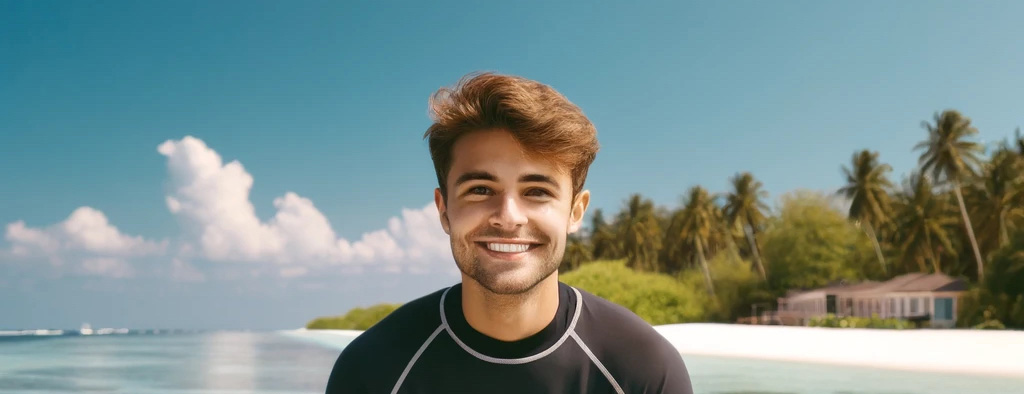
Scuba diving is a physical sport. Divers should be in good shape regardless of the type of dive or the parameters, shallow or deep water. Though, it is highly recommended for deep divers to be in good physical condition, as it is more demanding and places greater stress on the diver. Divers do not need to be in the same physical shape as a professional athlete, but individuals that have trouble or experience difficulties taking a walk should not exceed a maximum depth of 18 meters / 60 feet.
A good test to evaluate physical dive conditioning is to swim 300 meters / 330 yards in 15 minutes or less. Divers who are unable to do this are not necessarily precluded from deep diving, but it does indicate that they should exercise more frequently before diving in more demanding conditions, as deep diving is considered.
Obesity is an important factor to consider when discussing deep diving. Obesity is an excess of fat (adipose) tissue, accompanied by increased body weight and an increased predisposition to many potentially dangerous health conditions such as hypertension, diabetes, heart disease, stroke and joint disorders. It is not uncommon to see obese divers, and while obesity is not a contraindication to scuba diving, it does increase a diver’s risks of DCS and other health maladies associated with diving. In fact, in many locations, divers whose body weight is 20% or more than their ideal body weight are unable to qualify for scientific, commercial or military diving.
Obese divers often experience problems when looking for properly fitting equipment. Dive suits that are typically available are designed for individuals with medium builds and within the standard range of sizes extra small to extra large. Often these suits are too small for obese divers. A diver who wears a dive suit that is too small can cause thoracic constriction, which causes a reduction in the diver’s ability to breathe properly and results in an accumulation of carbon dioxide (hypercapnia). Larger divers may also have difficulty finding a weight belt that fits correctly. Because of this, larger divers sometimes put two weight belts together to create a belt that fits, which creates additional risk for the diver and his buddy. It may also be difficult to find properly fitting BCD. Wearing a BCD that is too small presents the same risks as wearing a wet suit that is too tight.
Adipose tissue is less dense than other tissue in the body. It is also less dense than water, which means it will float. It order to compensate for this, divers must add weight. The more adipose tissue a diver has, the more weight he will have to add to offset the positive buoyancy created by the excess adipose tissue. This may create additional potential problems for the diver. If the weight is incorrectly distributed on the belt, as discussed in chapter one, it will cause buoyancy control and pitch problems as well as back and hip pain. Once in the water, the diver will have to add excessive amounts of air to his BCD in order to obtain neutral buoyancy, which will worsen the situation if the diver is already wearing a BCD that is too small.
Obese individuals consume more air than their smaller counterparts. This is because their body has to provide nutrients to greater amounts of tissue and they have a larger profile, which results in less favorable hydrodynamic properties. As a result, they must work harder, and thus breathe more to move in the water. This is compounded in the presence of water currents, especially counter currents where gas consumption is increased in even the most physically fit diver.
Obese divers have a higher risk of decompression sickness due to the interactions between adipose tissue and nitrogen. Simply stated, nitrogen likes adipose tissue. In fact, nitrogen is five times more soluble in fat than muscle. This means that an obese individual will absorb more nitrogen than a physically fit diver that follows the exact same dive profile. Ultimately, an increase in the amount of nitrogen absorbed equates to a greater risk of DCS. To help reduce the risk of DCS, it is recommended that obese divers take a more conservative approach when diving. One such approach could be to use Nitrox as the breathing gas and plan to conduct the dive within the no-decompression air diving parameters. The SNSI Nitrox Diver course provides divers with the knowledge and skills necessary to dive using Nitrox as their breathing gas, and demonstrates how and why the use of Nitrox can reduce the risks associated with DCS and Nitrogen Narcosis. Contact an SNSI Instructor for more information.